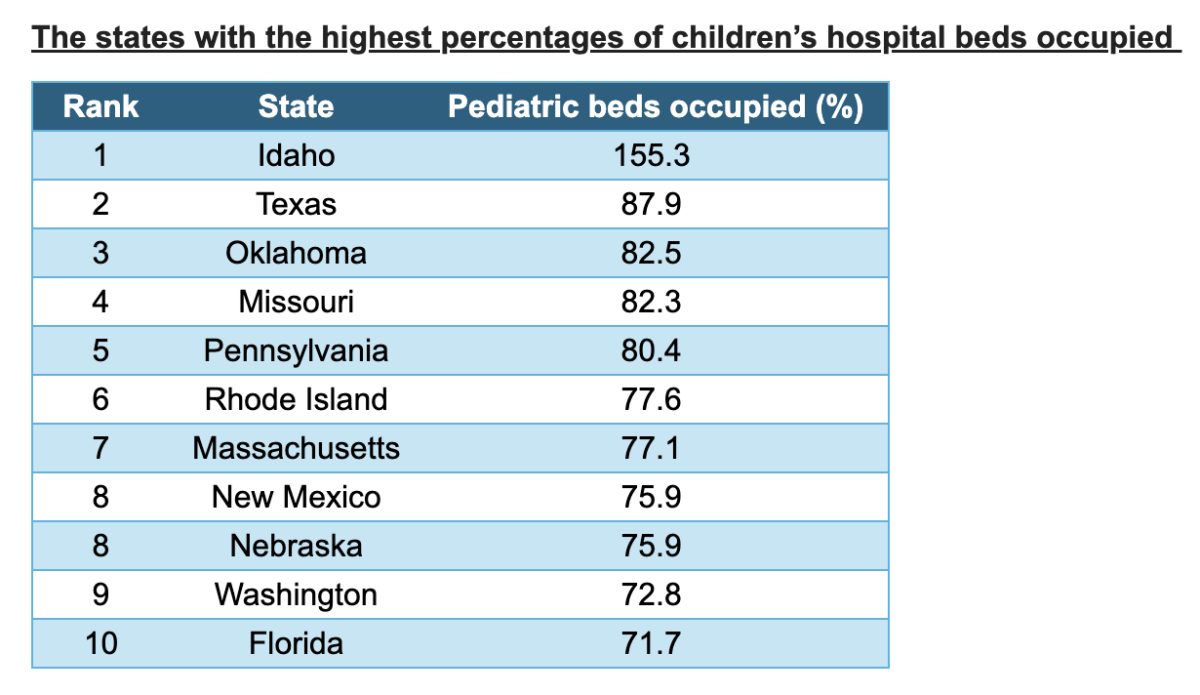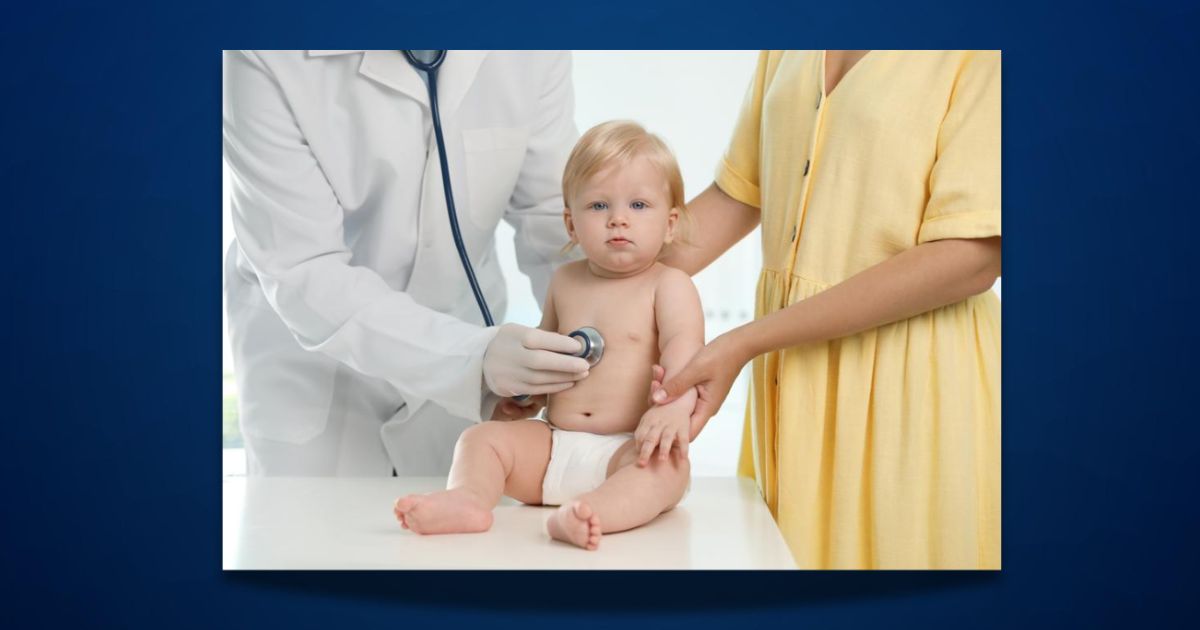New research has revealed which states have the most overwhelmed children’s wards, with Florida ranking tenth.
- Florida ranks tenth in the U.S., with 71.7% of children’s beds occupied.
- Idaho ranks number one, working at 55.3% over capacity with 155.3% of children’s hospital beds occupied.
- Alaska has the least overwhelmed children’s hospitals, with just 22% of beds occupied on average.

Injury lawyers at Bader Scott analyzed data from the U.S. Department of Health and Human Services to find the total number of pediatric beds across all hospitals in each state, as well as the average number that were occupied during April 2024, the most recent month with available data. They found the percentage of occupied beds in each state to determine which ones have the most overcrowded children’s wards.
Idaho ranks number one, with 155.3% of children’s beds occupied in April 2024, working at 55.3% over capacity. The state also only has one dedicated pediatric hospital, St. Luke’s Children’s Hospital.
Texas is next, with 87.9% of children’s beds occupied. The state has the highest total number of children’s beds in the ranking at 3,627, the second highest in the U.S., however, its pediatric wards are the second most overwhelmed in the country.
Oklahoma is third, with 82.5% of children’s beds taken. There are 359 children’s beds across hospitals in Oklahoma, with an average of 296 occupied at one time.
Missouri places fourth, with 82.3% of children’s beds occupied. There are 779 beds in total, with 641 typically in use.
Pennsylvania is fifth, with 80.4% of its children’s beds in use. The state has 1,612 in total, with an average of 1,296 occupied at one time.
Rhode Island is sixth, with 77.6% of its children’s beds filled. In total, the state has 152 beds, and an average of 118 are occupied at once.
Massachusetts ranks seventh, with 77.1% of children’s beds taken. Overall, Massachusetts has 869 children’s beds in its hospitals, with 670 in use on average.
New Mexico is eighth, with 75.9% of its children’s beds occupied. Of the 141 beds available, 107 are typically in use.
Nebraska also comes in eighth, with 75.9% of its children’s beds filled. The state has 344 beds, with an average of 261 occupied at any time.
Washington is ninth, with 72.8% of children’s beds in use. There are 511 children’s beds across hospitals in Washington, with 372 usually occupied.
Florida rounds out the top ten, with 71.7% of its children’s beds occupied. In total, the state has 2,437 children’s beds, with an average of 1,748 in use.
On the other hand, the state with the smallest percentage of children’s beds occupied is Alaska, at 22%.
“High bed occupancy in children’s wards can be addressed by increasing things like staffing levels, efficiency of patient flow, and overall number of patient beds,” Seth Bader, a spokesperson for Bader Scott, said. “This research has provided useful insight into the important issue of overoccupancy in children’s wards, which many states are facing, by highlighting the states struggling the most. However, implementing these changes can be challenging, with factors such as budget constraints when hiring new staff and physical space limitations when expanding bed capacity. While there are some outside factors, such as seasonal illnesses, that can’t be controlled, it is crucial that healthcare services focus on relieving some of the pressure on children’s wards and aim to find sustainable solutions through careful planning, investment, and coordination.”
This information was provided by Bader Scott, personal injury lawyers.












